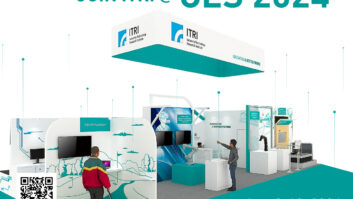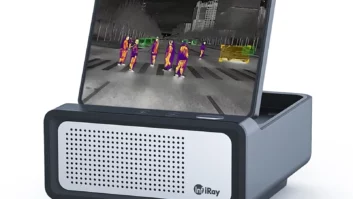LAS VEGAS – Satisfied in relative terms with 3D adoption in
2010, Panasonic will aggressively use the format this year to promote the
brand.
This is just one of the categories that Panasonic is
focusing on for its consumer business, and its B to B business, to achieve
future growth and increased profitability.
In discussing 3D TV’s sales performance in 2010 and if
Panasonic was satisfied, Joe Taylor, chairman/CEO of Panasonic Corporation of
North America, quipped, “We would be disappointed if we sold five times the
amount we sold last year.”
But he quickly added, “Some said 3D had a lower adoption
rate than other new technologies. In a practical sense, in the nine months 3D
was available last year, more sets were sold than in the first six years of
HDTV.”
Taylor said, “More content would help. That’s why we
partnered with DirecTV last year on 3D. Discovery will be created 200 more
hours of new content. Our expectation is that there will be a lot more
programming available. Three forms of content drives 3D in this order: movies,
and Hollywood is working on more and more releases; gaming, which is a little
simpler to produce than movies; and sports.”
Shiro Kitajima, president of Panasonic Consumer Electronics,
noted that last March the company introduced the first 3D TV at retail but,
hindsight being 20/20, they should have done a few things differently.
“We thought consumers would understand 3D. Some thought you
could only watch 3D and not 2D programming. Consumers didn’t understand why
they had to pay extra for 3D Blu-ray titles vs. standard Blu-ray, DVD or
downloads. Our communication was not good enough initially.”
But he noted that once demonstrations were held in stores,
more content became available, and more consumers saw it, “people saw the value
in the technology.”
By the fall when Panasonic sold bundles with “Avatar” and 3D
glasses, Kitajima said, “3D became a lot bigger part of our business” and
helped Panasonic generate double-digit overall TV sales gains by the end of
2010.
And he noted that 3D camcorders and cameras will help TV
sales in 2011. “Last year we introduced a pro and consumer 3D camcorders,” and
training on the pro side helped sales there. On the consumer side its unit
debuted in early October “at a $1,300 retail price. We sold over 4,000. They
may all be early adopters but we have expanded the line for 2011” with the
lowest street prices going well less than $1,000.
“All the channel partners we are talking to are talking
about 3D. It can help the camcorder business that has been competing against
smartphones that provide 2D standard-definition images,” he noted.
Taylor said Panasonic’s strategy for 3D was to claim it as
its own to build its brand image in the U.S.
“We are a 100-year-old $100 billion company and one of the
world’s technology leaders with more patents applied and granted than anyone.
If you said Intel is a tech leader to a consumer, they’d say sure. Panasonic?
They would question it.”
Taylor bluntly said, “We are a world-class manufacturing and
technology company. But in marketing we are poor. We must change the brand
image in the U.S.”
Panasonic has been using 3D to do just that. “We want to get
credit for building and designing the best TVs and the best 3D TV in the
marketplace.”
He noted that at International CES in 2009, “we said we
would have 3D TV in 2010 and we were laughed at. Last year’s show we said we
would be at retail and partner with DirecTV.”
Taylor said with 3D “Panasonic took a leadership role. We
got great buzz and great consumer recognition.”
By the end of the year the company got sidetracked “in just
moving boxes,” in Taylor’s words. “But we did sponsor the U.S. Open Tennis
tournament and Major League Baseball. We must do a better way of sustaining our
initial marketing effort.”
What Taylor wants Panasonic to do this year is promote “four
tent-pole events like the U.S. Open to spotlight 3D, promote content and
promote our brand.”
When asked if the popularity of smartphones and tablet PCs
will take over the top spot in CE from TVs, Taylor said, “I don’t think
ancillary devices will replace the screen that is the centerpiece of the home.
These devices want to tap into the entertainment you can see on the bigger
screen. What we need to do to make it easier for consumers to move content
around the home and in these devices and make it simple, without memorizing a
product guide.”
When asked if Panasonic is interested in introducing a tablet
PC, Taylor candidly said, “We care about tablets and smartphones, but we’re
behind a lot of catching up to do.”
He said that Panasonic does have a tablet in its B to B
Toughbook PC line, “but the sales for that market is not overwhelming.”
Taylor did stress, “It is absolutely important for us to
have a tablet” for the consumer market, and added, “I wouldn’t be surprised if
we would have one at next year’s CES.” As for whether it will feature 3D: “It
is too early to say.”













